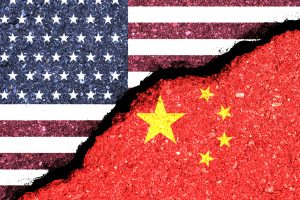The Diplomat author Mercy Kuo regularly engages subject-matter experts, policy practitioners, and strategic thinkers across the globe for their diverse insights into U.S. Asia policy. This conversation with Dr. Scott M. Moore ̶ director of China Programs and Strategic Initiatives in the Office of the Provost and lecturer in Political Science at the University of Pennsylvania and author of “China’s Next Act: How Sustainability and Technology are Reshaping China’s Rise and the World’s Future” (Oxford 2022) – is the 342nd in “The Trans-Pacific View Insight Series.”
Identify China’s development dilemmas.
One of the points I make in the book is that China is increasingly exposed to ecological and technological risk at the very time it is navigating a perilous phase of economic development, namely the transition to high-income country status. This makes these risks, including climate risk, all the more alarming to China’s leaders, and is part of the reason that cooperation with Beijing on global challenges is so difficult. Historically, many countries see falling or plateauing growth as they move up the income ladder, and it is also worth noting that this transition is often – though not always – associated with political reform and liberalization.
For China, navigating this transition also means dealing with the effects of COVID-19, growing restrictions on foreign investment and technology transfer, growing global political risk, local government debt, an over-leveraged property sector, and a demographic crunch that will force it to rely on continued productivity enhancements. What it all adds up to is a daunting, and alarming, set of development dilemmas that will increasingly challenge Beijing in the years to come. This challenge frames Beijing’s approach to shared global challenges like climate change and the regulation of emerging technologies.
What is the impact of China’s authoritarian environmentalism on protecting the planet?
As I detail in the book, China’s approach to environmental protection has several problematic features that can complicate cooperation with other countries. One is a strong role for the state that often extends to co-opting environmental organizations, which often has the effect of undermining accountability of polluters and environmental lawbreakers. Another is the use of environmental protection as a justification for measures that harm marginalized populations, such as Tibetan herders being forced off traditional lands to create protected areas.
Beijing has also attempted, though with limited success, to leverage its climate and other environmental policies to enhance its soft power at the expense of the United States. Finally, Beijing has attempted, again with mixed results, to attempt to rebrand its Belt and Road Initiative as a sustainable development effort, presumably to enhance China’s soft power.
How are China-U.S. strategic competition and environmental cooperation not mutually exclusive?
Beijing’s decision to suspend dialogue with Washington on climate change in the wake of Speaker Pelosi’s visit to Taiwan indicates that environmental cooperation cannot be completely insulated from fissures in the broader relationship. But that being said, as I note in the book there is a role for economic and geopolitical competition to help jump-start the deployment of clean technology. President Biden justified the Inflation Reduction Act, which is the largest single investment the U.S. has made in clean technology, in part by the need to better compete with China, for example. Competition for influence might play an even more important role when it comes to adaptation.
The U.S. Development Finance Corporation, which was created largely to counter China’s growing foreign influence and investment, includes a substantial commitment to climate finance. If used to enhance resilience, such financing might play an important role in bolstering the adaptive capacity of marginalized communities around the world in the face of climate change. Finally, as I point out in the book, there is considerable potential to expand U.S.-China cooperation on other environmental issues, especially biodiversity cooperation. Beijing effectively banned the wildlife trade because of the pandemic, for example, creating a window of opportunity to pursue more ambitious bilateral commitments to end wildlife trafficking.
Explain the correlation between the globalization of digital data collection and scope of China’s industrial espionage.
An observation I make in the book is that many of the risks and harms the outside world associates with China’s rise, such as the risk of intellectual property theft and information security threats, are being reduced within China while expanding beyond China’s borders. A range of evidence suggests that information theft and forced technology transfer is becoming increasingly rare for foreign firms operating in China. However, the role of China-linked actors, including those tied to China’s security and intelligence services, in collecting data and information on foreign and Chinese citizens abroad is increasing. This is increasing the risk of economic espionage, transnational repression, and other threats for firms and organizations operating even outside China.
Assess how China’s next act will shape the future and its implications for U.S. China policy.
For better or worse, U.S.-China relations, and by extension relations between foreign firms and organizations and their Chinese counterparts, are likely to be defined by rivalry for the foreseeable future. But the key message of my book is that the focus of this rivalry has expanded, from trade and military issues to ecological and technological ones. And developments in these newer issue areas are reshaping older ones. The focus of U.S.-China economic and geopolitical competition is increasingly shifting to the development of advanced technology, for example, while the biggest and best reason to maintain a constructive U.S.-China relationship is that Beijing’s participation is necessary to make progress on climate change and other global challenges. To paraphrase a Chinese parable, China and the United States hold different values, but very much share the same boat. This book is about what that means for all of us, including businesses, universities, and other organizations.

































